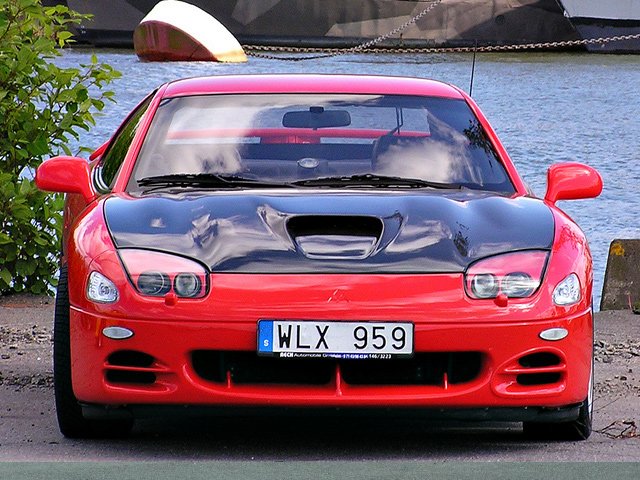One of the most powerful cars ever built by Mitsubishi, the 3000GT (or GTO as it was known in its home market of Japan) was much more technologically advanced than most of the cars it competed with during its lifetime. It was one of several 3.0-liter six-cylinder twin-turbo Japanese cars available at the time, and like the others, was capable of some huge power gains. It was heavier than some competitors, but could still be made very, very fast.

The inspiration for the 3000GT would come from Mitsubishi's HSR line of concept cars which were built from 1987 through 1997. The second generation of these was so well received that Mitsubishi evolved it further, making the HSX in 1989, a concept more realistic for production. In 1990, this would debut as the 3000GT production model, with a surprisingly large amount of the concept's technology carrying over. The car was also rebadged and sold as the Dodge Stealth, with only slightly tweaked styling, but without some of the features found on the Mitsubishi. The Mitsubishi is the preferred vehicle for tuning.

A base model was offered, but these were really to be avoided. These base-model cars weren't turbocharged, and also lacked many of the other features which made the top VR-4 trim as great as it was. But those VR-4 cars were just packed with goodies. It offered full-time all-wheel-drive, still quite rare 1990, outside of some European cars which sold for much more money. There was also four-wheel steering, active aerodynamics and electronically-controlled suspension. The engine was a DOHC 3.0-liter twin-turbo 24-valve V6. This officially produced 276 horsepower in Japan and 296 everywhere else, bit it's likely that the number for Japan was simply underrated.

Horsepower would receive a bump up to 321 for 1994, and would stay there for the rest of the life of the car. All of this technology really was something for the time. It was a feat similar to the Porsche 959, which had only gone out of production the year before, but Mitsubishi was selling it for a fraction of the price. Of course, not everything from the 959 was found on the 3000GT, and the weight-saving advanced materials were certainly among those things. The 3000GT would end up weighing in at 3,800lbs, such is the price of all that tech. But the car was a handling beast, and this was generally seen as a reasonable trade-off.

When it came to tuning, as with many highly advanced cars, quite a surprising amount of power could be found reasonably cheaply with a simple ECU remapping. But the 3000GT was often a project car for more serious tuning. With strengthened internals, it would hold quite a bit of boost, and the full-time AWD would have no problem putting that power to the ground. Even an ECU remapping would often require upgrades to the fuel system and to the clutch in order to effectively make use of the upgrade, and this is why the projects tended to be more involved. No sense in going to all that trouble for mere modest gains.

As with many other Japanese sports cars during the Nineties, unfavorable exchange rates led to climbing prices toward the end of the decade, and sales would slow down for several years before Mitsubishi finally pulled them out of the US market in 1999. The JDM GTO-badged car would follow, meeting its end in 2000. The bad luck of unfavorable economic conditions is a huge shame in the case of the 3000GT, perhaps more so than with its competitors. The Supra had been around since the late Seventies, and the 300ZX had lineage stretching back even further. But the 3000GT was all new when it debuted, and had only a decade to evolve.

There was great potential for it to have become much more, if only it had lived. It is likely that such a car would today be a serious rival to the Nissan GT-R, just as the GTO had given the R32 and R33 Skyline GT-R models a run for their money. Now that would be something to see.



Nouvelles connexes



